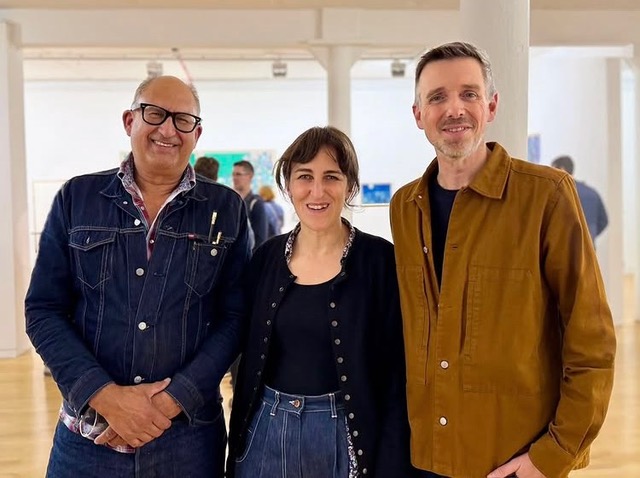GLASGOW PRINT STUDIO has come a long way since 1972. It’s now one of the leading, established names in printmaking in Europe and indeed worldwide. New director Claire Forsyth has galvanised things with new ideas, new projects, new awards and scholarships.
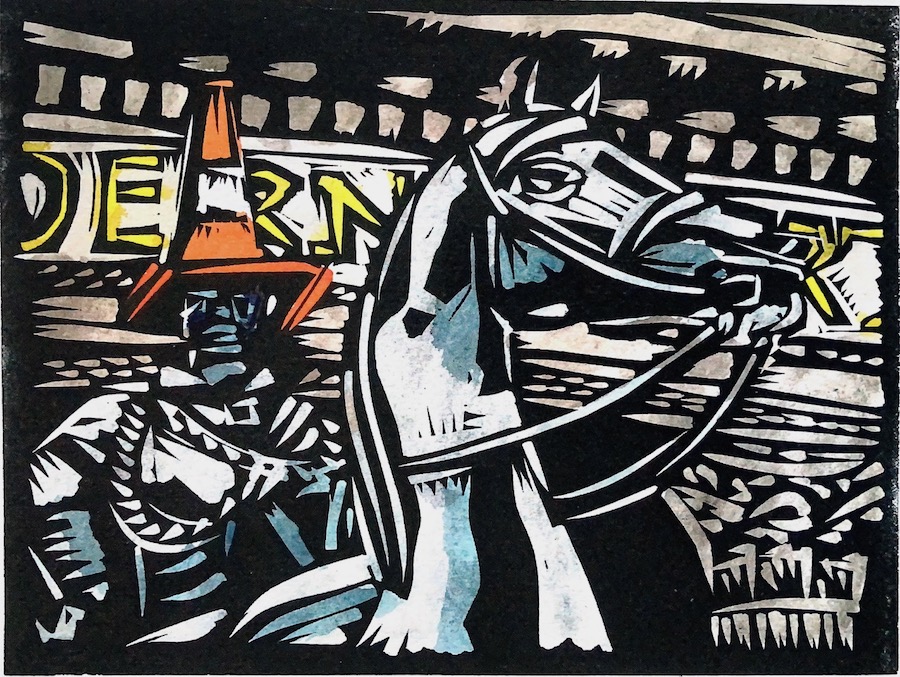
The latest show, “Sanctuary”, by three well-known printmakers, was launched with a talk by each artist. It got things off to a lively start as these three: TOM HAMMICK, KATHERINE JONES RA, and IAN CHAMBERLAIN, were joined by painter CALUM McCLURE and printmaker DAMIAN HENRY, making five exhibitions throughout the building.
Hammick, well known for his vast, vivid, detailed, decorative woodcuts, has previously shown at GPS. This summer, Jones editioned two coloured etchings in the workshop, which, contrary to the precise medium of etching, used her very fluid paintings as a basis. Both artists enjoy utilising complex techniques, but as Hammock says, “In fact, I’m employing the oldest, most ancient, clunkiest method as used by Gutenberg 600 years ago!”
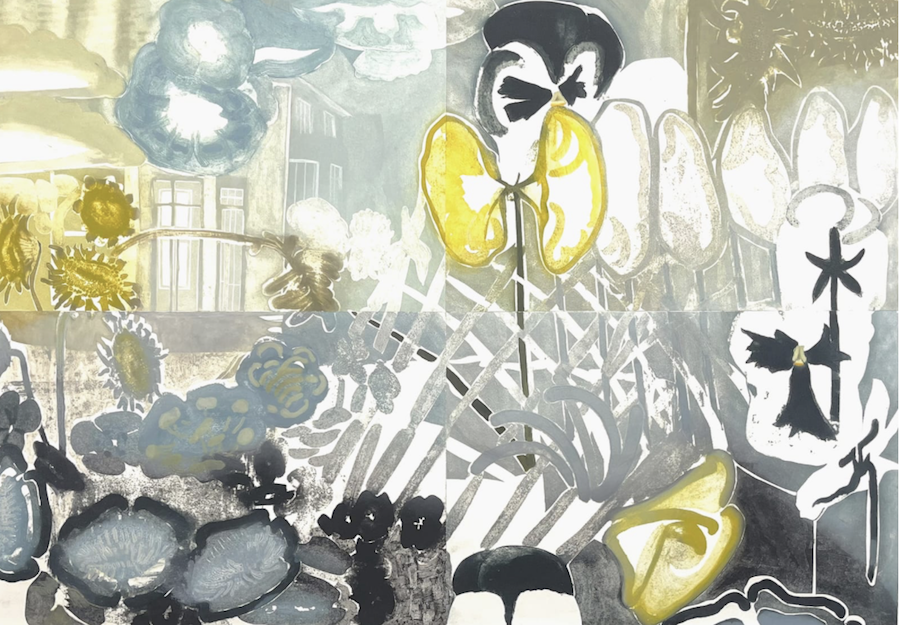
Jones, who has her own workshop in Brixton, admits she is a control freak when it comes to her prints. One exhibition highlight is All the Springs We’ve Ever Had (2024), one of her most complex recent works —a vast, hand-coloured 65-inch collagraph made from four metal plates, where she achieves texture using sand and ink. Her sunflowers are pretty remarkable.
She also shows several ephemeral, pansy-face-inspired prints, images that float in dream-like clouds of pale yellow and pink. Her aim, she told me, is to emulate watercolour with its nebulous nature, “Not solid, there and not there, partly remembered.” To keep things fluid and spontaneous, she first creates numerous rough sketches on scraps of paper. Seeing “utterly gorgeous flower paintings” by Victorian Glasgow Boy Stuart Park at Kelvingrove inspired her. “I stole his image of violets,” she confessed! For her, the idea of sanctuary is “What we all think we want, but is never achievable.”
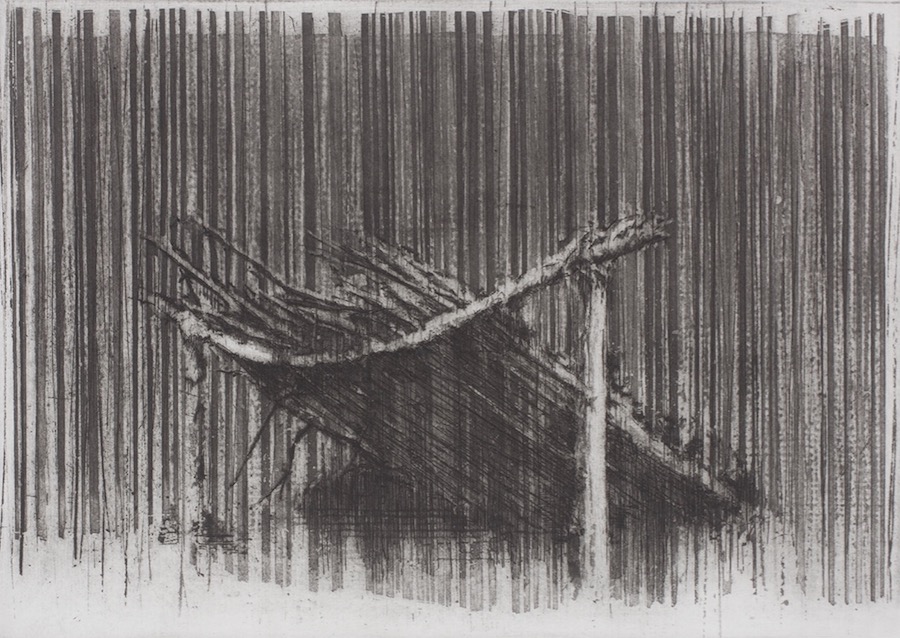
The third artist in SANCTURY is etcher Ian Chamberlain, the only one who has not yet created work at GPS. The word ‘Sanctuary’ contains a wide range of interpretation- protection, shelter, asylum, safety, refuge. Chamberlain treats the term at its most basic, realistic form: hideouts created with branches and twigs, the sort kids make while playing in the woods. Chamberlain actually saw some whilst on long walks with his kids during Covid. Many images were created at home. With no access to a workshop, he was forced to resort to drawings. Some images have been transformed into cyanotypes, a form of photography that utilises darkroom techniques, adding another layer to these striking works.
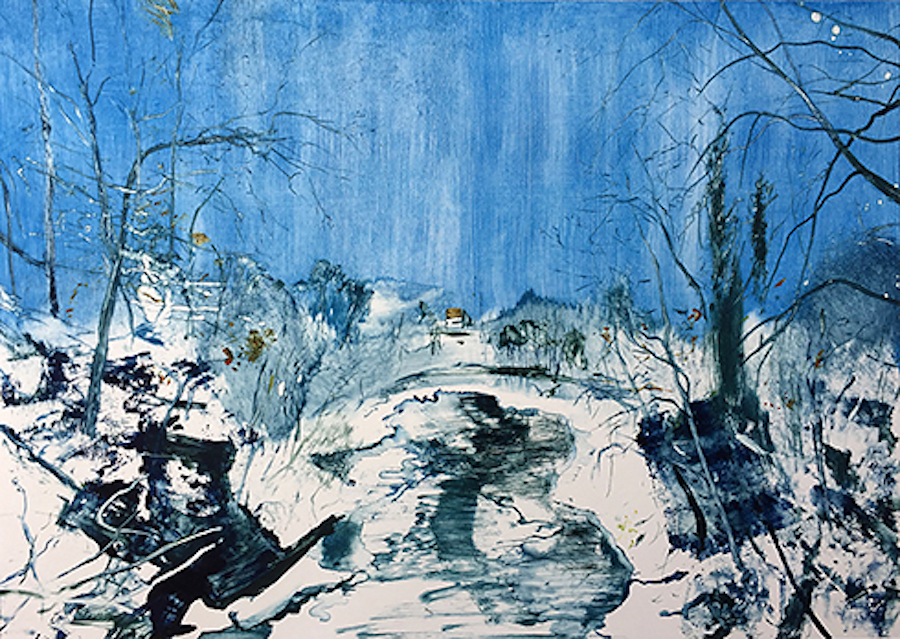
Downstairs, Edinburgh-trained painter and printmaker Calum McClure shows for the third time. His atmospheric monotypes, created with watercolour or gouache, are inspired by images of paths, walls, trees, and overgrown ruins near his new home in northern Italy, on the border with Slovenia, where the Iron Curtain once ran, ending in the city of Trieste. His gestural style of semi-abstract marks creates pale, ethereal landscapes of slender, wintry trees weaving across the picture.
In contrast, the images in DAMIAN HENRY’s 4th show at GPS galleries are bold, colourful, and dynamic. His subject is Glasgow landmarks, marking the city’s 850th birthday. These etchings, silkscreens, linocuts, and digital prints capture key locations, including Kelvingrove Park, Tolbooth and Mercat Cross, Glasgow University, Oran Mor, Riverside Museum, and the Duke of Wellington, with his famous Glasgow hat. “These are not architectural renderings; their power lies in vivid images of Glasgow’s buildings seen through the eyes of an artist,” says Adrian Wiszniewski, RSA
Top Photo: Tom, Katherine, Ian in Sanctuary at GPS

